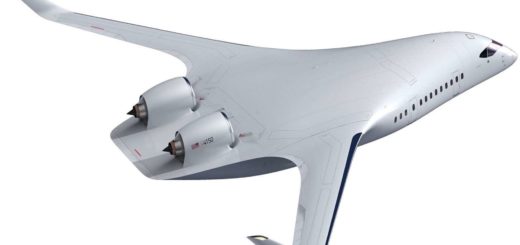Sole survivors: miraculous escapes from deadly crashes leave an indelible mark

Commercial aircraft crashes involving the tragic deaths of passengers never fail to gain the attention of the world.
The often highly dramatic events seem to strike a chord with the public perhaps because they highlight the fragility of life when travelling on exciting adventures or a feeling that the victims could have been anyone of us.
But where there is extreme pain and suffering there are often stories of miracles and the human instinct to survive against the odds
For those that survive plane crashes when everyone around them, including loved ones, perish, the psychological turmoil that follows can be an incredible weight to bear.
‘Survivors guilt’ can lead to feelings of distress in which they may feel responsible and that they are someway to blame for the deaths of others.
A 2016 study by Free University Amsterdam found that following a plane crash a significant proportion of survivors suffer posttraumatic stress disorder (PTSD) and depression.
After working with 82 survivors of a 2009 plane crash near Amsterdam the study found that two months after the event 46% were at risk of PTSD and 32% of depression.
A further 76 survivors from the same crash were questioned nine months after the event and found that 47% were at risk of PTSD and 35% of depression.
In the last 50 years, it is thought that there have been fewer than 30 sole survivors from commercial flights that crashed killing everybody onboard with the exception of them.
While their survival is astonishing, their testimony of what happened and how they now view life through a different lens is equally captivating and inspiring.
Cecelia Cichan
Four-year-old Cecelia Cichan from Tempe, Arizona, was travelling with her mother, father and six-year-old brother on Northwest Airlines Flight 255 on August 16, 1987, when the McDonnell Douglas MD-80 aircraft crashed shortly after takeoff.
The MD-80, registered N312RC, was scheduled to land at Phoenix Sky Harbor International Airport (PHX) but ran into difficulties after takeoff, colliding with obstacles northeast of the runway.
According to the Federal Aviation Administration (FAA), the MD-80 “broke up as it slid across the ground, and post-impact fires erupted along the wreckage path”.
Sole Survivors: Cecelia Cichan, Age 4. Northwest Airlines Flight 255 (1987). Deaths 156. pic.twitter.com/3os8NCeqjw— Luke (past aviation account ) (@Drawingyterss) November 6, 2015 In the ensuing mayhem, all six crewmembers, 148 passengers and two people on a road adjacent to the airport died but against the odds young Cecelia Cichan survived despite being seriously injured.
Deputy James Arnold of the Wayne County Sheriff’s office found the four-year-old after, assisted by John Thiede from the Romulus Fire Department
“There was a seat upside down, and we moved the chair and checked underneath the chair. When we looked, a hand was coming out from the chair that she was in,” Thiede told CBS.
In hospital Cecelia Cichan underwent four skin grafts for severe burns and received treatment after suffering a fracture to her skull and collarbone and a broken left leg.
The National Transportation Safety Board (NTSB) concluded that the probable cause of the accident was the flight crew’s failure to use the taxi checklist to ensure that the flaps and slats were extended for takeoff.
Additionally, an absence of electrical power to the aircraft’s takeoff warning system meant the flight crew were not advised that the plane was configured properly.
Cecelia Cichan was looked after by her aunt and uncle in Birmingham, Alabama, where she was mainly protected from the media spotlight.
On this day in 1987: More than 150 people are killed when Northwest Airlines Flight 255 crashes while trying to take off from @DTWeetin. Lone survivor is 4-year-old Cecelia Cichan who sustains serious injuries. It is the second-deadliest aviation accident in the United States. pic.twitter.com/X4aUEcrRTY— Ken Coleman (@HistoryLivesDet) August 16, 2020 In 2013, Cecelia, now Cecelia Crocker following a marriage, spoke about the crash for a documentary called ‘Sole Survivor’ after remaining silent for years.
“I think about the accident every day. It’s kind of hard not to think about it when I look in the mirror. I have visual scars. My arms and my legs. And I have a scar on my forehead. I got this tattoo (of a plane) as a reminder of where I’ve come from. So many scars were put on my body against my will, and I decided to put this on my body for myself,” said Cecilia Crocker in the documentary.
During the interview Cecelia expressed how feelings of guilt for surviving the crash have developed over the years.
“When I realized I was the only person to survive that plane crash, I was maybe in middle school, high school, maybe, being an adolescent and confused. So, it was just extra stress for me. I remember feeling angry and survivor’s guilt. ‘Why didn’t my brother survive? Why didn’t anybody? Why me?’” she said.
The incredible survivor also revealed that flying doesn’t scare her despite the tragedy having such a huge impact on her life.
“I have this mentality where if something bad happened to me once on a plane, it’s not going to happen again. The odds are just astronomical,” she said.
Bahia Bakari
On June 30, 2009, 12-year-old Bahia Bakari was flying from France with her mother to Comoros, an archipelagic country off the east coast of Mozambique, to visit relatives.
The Yemenia Airways Airbus A310-300, registered 7O-ADJ, flew from Sanaa in Yemen and was approaching Prince Said Ibrahim International Airport (HAH), when it crashed at full throttle into the Indian Ocean at 01:50, local time.
When the aircraft went down there were 142 passengers and 11 crewmembers onboard, many who had boarded in Paris and Marseille on a connecting flight into Yemen.
Kambui / Creative CommonsAs Bahia Bakari fought for her survival in the dark, choppy waters she had no idea that she was the sole survivor and her mother along with 151 people had perished.
For 10 hours the 12-year-old clung to aircraft wreckage before she was plucked from the ocean by a rescue team.
The day after the tragedy, Bahia Bakari’s father, Kassim, told the French media that his daughter had suffered a fractured collarbone and cuts and bruises to her face.
“I asked her what happened, and she said: ‘We saw the plane fall in the water. I found myself in the water. I was hearing people speak but I couldn’t see anyone. I was in the dark. I couldn’t see anything. Daddy, I couldn’t swim very well. I grabbed on to something, but I don’t know what’,” Kassim Bakari said after speaking to his daughter on the telephone.
The Guardian reported that after visiting the survivor Alain Joyandet, the French co-operation secretary, said that Bahia Bakari had shown “incredible physical and moral strength”.
“She is physically out of danger, she is evidently very traumatized,” Joyandet added.
In April 2012, Bahia Bakari spoke out for the first time and described how the Airbus A310 was “shaking” before the aircraft crashed.
“I remember that I was sat next to my mother, who was tired, and so was I. There were lots of people sleeping in the plane […] I saw by the porthole the plane was shaking. We were asked to fasten our seat belts, not because of turbulence, but because we were about to land,” Bahia Bakari told a French radio station.
She explained that she had the feeling something was wrong as she had never experienced an aircraft vibrate so much.
In the water she described there being choppy waves and for a while she could hear other people still alive nearby, but she could not see them.
“When I found myself back in the water, I said to myself that it was necessary to stay awake and that rescuers would not be late arriving. But I stayed awake, and I saw nothing. Then I fell asleep. In the morning, I again remained hopeful. But then I said to myself, that’s that, they’re not going to find me,” said Bahia Bakar.
Bahia Bakari,yon jèn rescape fransèz kitap vrayaje ak manmanl Abò vòl Yemenia 626, yon Airbus A310,kite esploze 153, pasajè nan nuit ki te 30 jen 2009, nan okseyan endyen nan rejyon nò peyi comorean afrik, Bahia Bakari ta pral sove par yon pechè Comorienaprè 9èd tan. pic.twitter.com/2CeDjsUd00— PLAToA (@PlatoA_) October 26, 2023 In 2022, Bahia Bakar gave evidence as part of a French trial against Yemenia where she told the court more about the lead up to the crash.
According to Agence France-Presse, she said that while she was in the water she had “the taste of jet fuel” in her mouth and that she was unsure how she “was going to get through this”.
In front of more than 100 relatives of the crash victims, Bahia Bakar described how the flight “went normally” until the decent into Comoros began.
“I started to feel the turbulence, but nobody was reacting much, so I told myself it must be normal […] I felt something like an electric shock go through my body. There’s a black hole between the moment when I was seated in the plane and the moment I found myself in the water,” she told the court.
She later added: “I realized that voices were calling for help in Comorian, and I cried out a bit but without much hope, because there was nothing but water around me and I couldn’t see anyone.”
When explaining how she got through the ordeal Bahia Bakar told the court she was thinking of her “incredibly protective” mother and that gave her the strength to hold on.
Juliane Koepcke
Juliane Koepcke was 17 years old when she boarded Lineas Aéreas Nacionales SA (commonly known as LANSA) Flight 508 on December 24, 1971, in Lima, Peru, with her mother.
Including Juliane Koepcke there were 86 passengers and six crewmembers on board the Lockheed L-188 Electra turboprop that was scheduled to fly to Pucallpa and then on to Iquitos, both in Peru.
In an interview with CNN in 2009, the dual German Peruvian national said she and her mother had reservations about LANSA’s safety record but they wanted to be with her father, who ran a research station in the Amazon Rainforest, for Christmas.
During the flight, the aircraft encountered thunderstorms and heavy turbulence resulting in the engine being struck by lightning and right wing tearing off the plane.
“Then we flew into heavy clouds and the plane started shaking. My mother was very nervous. Then to the right we saw a bright flash and the plane went into a nose dive. My mother said, ‘This is it!’,” Juliane Koepcke told CNN.
#OTD in 1971: LANSA Flight 508, an L-188 Electra, crashes in Puerto Inca (Peru), 91 die. Plane was hit by lightning and fell in the jungle. Lone survivor, 17 yo Juliane Koepcke, used survival skills to make her way out of the location until she was found by locals, 11 days later. pic.twitter.com/qvlskz8oVK— Air Safety #OTD by Francisco Cunha (@OnDisasters) December 24, 2021 According to Juliane Koepcke as the aircraft broke into pieces mid-flight she was thrown out of the plane and remembers falling through the sky.
“Suddenly there was this amazing silence. The plane was gone. I must have been unconscious and then came to in midair. I was flying, spinning through the air and I could see the forest spinning beneath me,” she said.
It is thought that Juliane Koepcke fell three kilometers (two miles) and by some miracle survived.
It is believed that the seat she was strapped to acted as a makeshift parachute slowing her fall and that the dense forest cushioned her landing.
In many ways, though her battle for survival was only just beginning when she awoke on the ground.
Having learnt survival skills from her parents who both worked as zoologists in the Amazon Rainforest, Juliane Koepcke decided to follow a creek which she knew would lead to a river and help.
For 11 days she trekked through the jungle suffering from concussion, a broken collarbone, and a large cut on her right arm. An insect even laid eggs in her cut, and around 50 maggots were later found when she found help.
Cancillería del Perú / Creative CommonsAfter 11 days she came across a small boat by a river and decided to wait to see if anyone returned for it.
Thankfully, some Peruvian lumberjacks working in the forest found her and took her to the nearest town where she was given treatment.
In her memoir, ‘When I fell from the sky’, Juliane Koepcke, wrote: “I’m aware that it’s a miracle that I’m still alive, and I wonder why me of all people. I have survived the crash and believe that I now have to get through this too. I pray that I will find people. I pray for my rescue. I want to live. With every fiber of my gradually weakening body, I want to live. And then I wonder what I will do with that life when this is finally over.”
In a 2010 interview the profound effect of her survival was clear to see, when she said: “I had nightmares for a long time, for years, and of course the grief about my mother’s death and that of the other people came back again and again. The thought, ‘Why was I the only survivor?’ haunts me. It always will.”
RELATED
Tenerife airport disaster: tragically, neither plane was even meant to be there
The post Sole survivors: miraculous escapes from deadly crashes leave an indelible mark appeared first on AeroTime.
Commercial aircraft crashes involving the tragic deaths of passengers never fail to gain the attention of the world. …
The post Sole survivors: miraculous escapes from deadly crashes leave an indelible mark appeared first on AeroTime.





